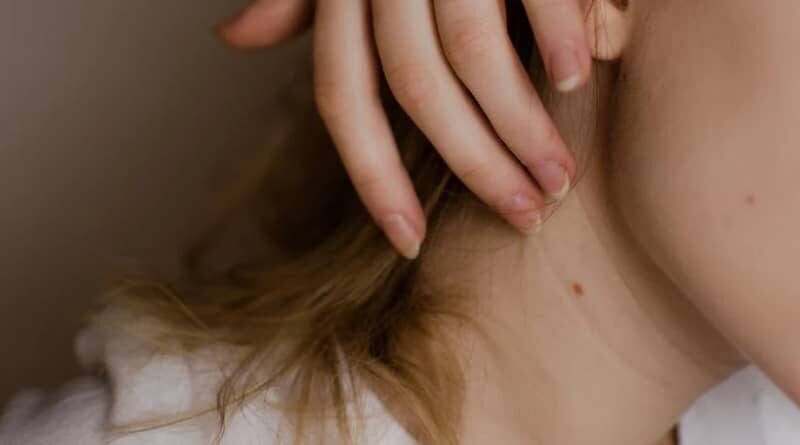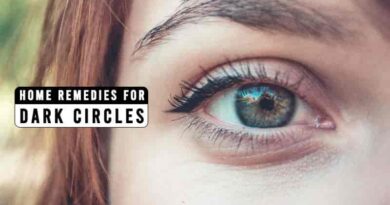Does Stress Affect Moles On Our Skin?
Stress is something we all experience during our lives and can result from many things, including pressure at work, financial problems or personal relationships. Although stress causes biological changes in the brain, it also has impacts on our physical health, and the effects of stress can be particularly seen on our skin.
During stressful moments, the body produces extra cortisol, also known as the ‘stress hormone.’ Having excess cortisol in the body can impact the immune system and make changes to your blood pressure. Cortisol is produced in the adrenal glands, which increase sebaceous gland activity and produce more oil and sebum in the skin. This can lead to problems such as acne flare-ups and sensitive skin, as well as rashes, wrinkles, lines and loss of skin elasticity.
Table of Contents
Can Stress Affect Moles?
A mole is a small coloured spot on the skin made up of a cluster of cells known as melanocytes, which are responsible for producing the pigment in your skin. These melanocytes can sometimes grow in a cluster rather than being spread out, which results in the formation of a mole. Moles are caused by an interaction of genetic factors and sun damage, with the development of melanoma skin cancer often being attributed to sun damage from direct sunlight and artificial tanning lights. Stress doesn’t cause moles to appear on the skin or role in moles turning into melanoma skin cancer.
Read: Best Treatments for Aging Skin
How Often Do New Moles Appear?
Most moles develop on the skin during childhood. However, some are present from birth. Moles develop due to both genetics and exposure to the sun and can have normal changes in response to hormonal changes such as puberty and pregnancy.
Different types of moles can be categorized into a few main groups:
Common Moles
These are moles which most adults have. The average adult will have between 10 and 40 moles which can develop from childhood until middle-age adulthood. Mole colours are usually brown but can vary from flesh-coloured to pink, black or blue. Common moles can either be flat on the skin or slightly raised and rounded. A benign, common mole is usually less than 5mm in diameter, circular, symmetrical and one colour.
Congenital Nevi
These are moles that are present at birth and are seen in about 1 in 100 people as a common type of birthmark. These moles are slightly more likely to develop into melanoma skin cancer than moles that develop after birth. They are often round or oval and usually raised from the skin. They can be single coloured or multicoloured and can vary in size.
Dysplastic Nevi
Dysplastic moles are larger than a common mole. These moles should be carefully monitored for changes as they are more likely to develop into melanoma skin cancer. They can be uneven, irregular in shape and made up of multiple colours.
You should be checking your moles at home at least once a month, especially if your skin is often exposed to sunlight or you use sunbeds. You are looking for any changes to the size, colour or shape of your moles and symptoms such as itching, bleeding or crusting. Your moles should be symmetrical, have even borders, be one colour, be smaller than ¼ inch and not be changing or developing new characteristics.
Read: Types of Plastic Surgery
How Stress Affects The Skin
Feeling stressed can impact the skin, worsening existing skin conditions and even triggering new ones. The most common skin condition which is associated with stress is acne. The stress hormone cortisol can trigger excess oil production in the sebaceous glands, clogging the pores and leading to breakouts.
Stress is also linked as both a causing and maintaining factor of the skin condition psoriasis. A study in 2015 looked into this relationship and found that half of the people who have psoriasis(1) said it first appeared during a stressful part of their lives and 63% said their symptoms worsened during periods of stress or high pressure.
During times of stress, it is also common to experience dry skin as stress can impair the function of the outer layer of the skin, which acts to keep the skin cells hydrated and protected. Rashes are also commonly seen alongside stress due to a weakened immune system which causes an imbalance of bacteria, and as such, rashes associated with eczema are often worsened.
When it comes to looking after your skin during periods of stress, it is recommended to eat a healthy balanced diet, protect the skin from UV rays using a high factor sun cream and use a moisturizer that has anti-inflammatory ingredients, which will help redness, flaking and itching of the skin. Soothing ingredients such as aloe vera, chamomile, and rosemary will also help to restore the skin’s surface and protect against moisture loss. It is also important to address the stress you are feeling in your life and work on coping mechanisms to help you feel calm and rested, which in turn will help your skin.
What To Do If You’re Concerned About Your Moles
If following your home mole checks you are concerned about any of your moles, it is important to get them professionally checked. A dermatologist can make a detailed assessment of your worrying mole and identify if it is benign or if it needs further investigation and treatment.
Melanoma caught early has about a 99% survival rate of five years, whereas if you catch it later, this rate can drop to around 60%. A consultant dermatologist conducting a professional mole check can catch melanoma skin cancer when it is thinner and earlier in its development.
There are a couple of different mole check services offered in a mole check clinic that are far more detailed and advanced than can be achieved with an at-home mole check:
Full Body Mole Check
Suppose you have a lot of moles on your body. In that case, a consultant dermatologist can conduct a full body mole check, examining the skin for every mole and lesion using a dermatoscope which uses magnification and light to view moles in detail. The moles will be distinguished as either benign or malignant (cancerous), and removal or treatment options will be discussed if a cause for concern is found.
Full Body Mole Map
Full body mole mapping using the Fotofinder system provides state of the art laser-guided computer mapping of your entire skin and gives high-resolution images of individual moles. Artificial intelligence is used to differentiate moles from benign or cancerous, and a consultant dermatologist will also examine the findings using their wealth of expertise. The images are stored for future reference, so during an annual appointment, your new mole map will be compared to the previous images. Its ability to compare images and identify changes makes it a highly accurate tool in developing skin cancer.
Read: Different Ways You Can Have A Facelift
Author Bio
Conveniently located in South Manchester, Cheadle village town centre, Everything Skin Clinic is a unique Consultant-led dermatology clinic that offers treatment of all skin conditions under one roof.
Our team of highly trained Consultant Dermatologists have completed specialist training in Dermatology and are on the specialist register of the General Medical Council. All our consultants hold substantive contracts with the best Dermatology centres in leading NHS hospitals. You can, therefore, be assured of the highest quality private dermatology care.
Our private dermatology clinic is unique in that all aspects of dermatology treatments are catered for. From blemishes to eczema or psoriasis, facial redness to mole mapping and mole removal, from excision of melanoma to Mohs Surgery for basal cell carcinoma, skin, hair, or nail disorders are diagnosed treated at Everything Skin Clinic by our expert.
Consultant dermatologists.
In 2020, Everything Skin Clinic joined The Dermatology Partnership. The aim of the partnership is to build the UK’s leading dermatology group, defined by its clinical excellence and focus on leading dermatological care.




